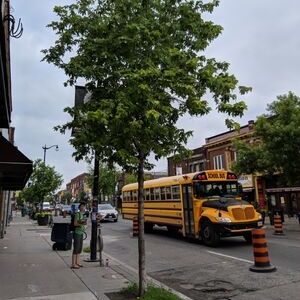
Developed by Dr. Andy Kenney and Dr. Danijela Puric-Mladenovic at the University of Toronto Faculty of Forestry, the Neighbourwoods© assessment is a standardized data-collection method designed to help citizen scientists conduct an inventory of their urban forest, assess overall health, and strategically plan stewardship interventions.
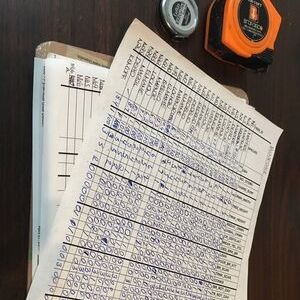
Neighbourwoods© takes 32 different factors into account on each tree to paint a well-rounded picture of overall tree health. These factors include data on the tree location and growing conditions, the species type, and the size, health and structure of the tree. Health and structure factors include things like the presence of trunk scars, how full and healthy the crown is, the quality of the tree foliage, and potential conflicts with nearby structures. These 32 factors are then processed through an algorithm that produces a health value that ranges from excellent to very poor.
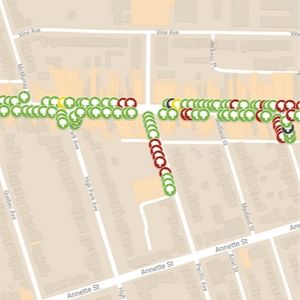
LEAF uses Neighbourwoods© to conduct tree health assessments within the Adopt-A-Street-Tree program. This program is a collaborative effort between LEAF, the City of Toronto, BIAs, community groups and other partners. It encourages and guides community tree stewardship, helping the city’s most vulnerable trees grow to their leafiest potential so that Torontonians can enjoy the numerous benefits that a lush urban canopy provides.
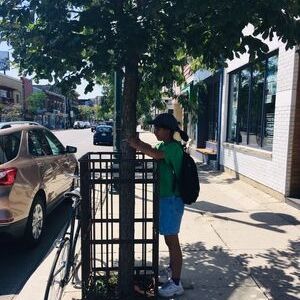
Armed with clipboards and measuring tools, LEAF staff were out this July and August conducting health assessments on 513 trees in the Junction, Bloordale, and Liberty Village neighbourhoods. Many of these trees are young and in the most need of basic care, like regular watering, in order to establish deep and healthy root systems to support their growth. In addition to attracting the attention of an interested raccoon, local residents who stopped to talk during inventory activities were both curious and appreciative to know that their local street trees were being monitored and cared for by local businesses and volunteers.
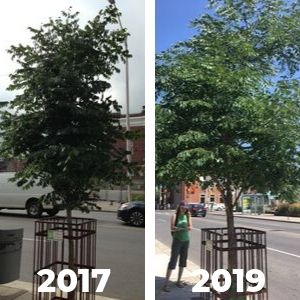
Through assessing street tree health, we can monitor the success of adoption activities year-to-year. Oftentimes simple acts of stewardship, like regular watering, or clearing the trash tossed into planting beds or treegator bags, can help street trees thrive. Healthy street tree canopies provide more local cooling, act as more robust stormwater infrastructure to mitigate flooding, and are an attractive aesthetic feature for businesses and homeowners alike. Tree adopters also reap the benefits of a stronger sense of community and enjoy their time spent outdoors working directly with nature.
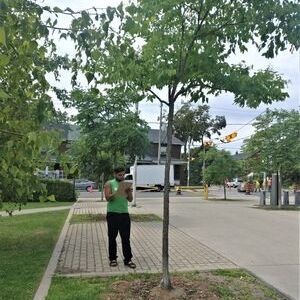
As we wrap up our 2019 inventory season, we reflect back on how the process has sharpened our observation skills and brought awareness to the vulnerability and tenacity of the urban forest. We look forward to sharing the results of our assessments with all the wonderful volunteers and adopters that help keep our street trees thriving.
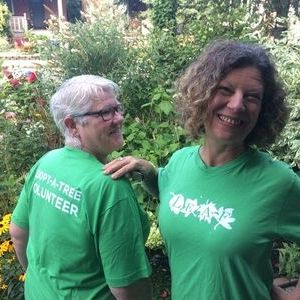
Interested in adopting a tree in one of our existing neighbourhood programs? Connect with us to find out what trees near you are available for adoption. We also provide resources to urban forest champions looking to start a program in their own neighbourhood.
This blog was written collaboratively by three LEAF staff: Kaja McDonald, Stewardship Programs Assistant; Darya Shinwary, Youth Program Assistant; and, Rabib Naim, Youth Program Assistant.
